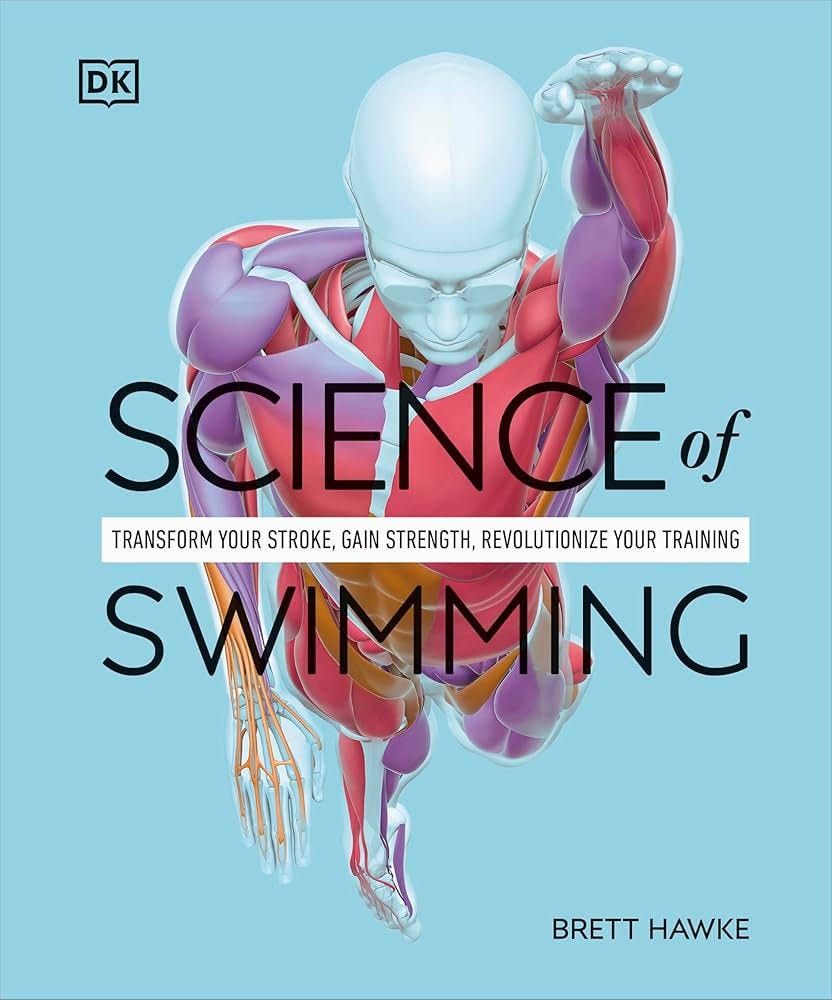Book review: The Science of Swimming by Brett Hawke
Brett Hawke, on his podcast with the renowned physiologist Jan Olbrecht, said recently that “I’m not the science guy, I’m the feeling guy”. When you pick up “The Science of Swimming by Brett Hawke” then, you might be pressed to look elsewhere on his CV for assurance you’re in safe hands. Brett competed for Australia in the 2000 and 2004 Olympics, and was head coach at Auburn Tigers Swimming Team from 2009 to 2018. He coached César Cielo to the 50m freestyle world record in 2009 (still held), and has coached numerous other blink and you’ll miss em types such as Frédérick Bousquet and Bruno Fratus. In June 2024 it was announced that Brett would be replacing Mark Schubert as director of high performance at The Swim Team (TST) in California. Relatively safe I reckon, then.
Brett also spearheads an online movement called the “Sprint Revolution”. The “Sprint Revolution”, you'll have guessed, is a philosophy of training advocated by Brett (and others) that recommends shorter distance, higher-paced training for physical development. This as opposed to the long, arduous metres commonly endured by swimmers globally. Anyone who’s spent more than a stroke cycle inside age-group swimming will know this philosophy goes against grain (to say the least). And this book comes along in the height of “The Sprint Revolution”s online stardom; they have training aids, they have t-shrits, and Brett himself has a sprint-centric podcast. On The Sprint Revolutions Instagram, Brett posted about this incoming book in December. So is this, now, the weaving together, the crystallisation of his counter-movement?
On the cover, barring the title, and the first of many athletes drawn without skin, there’s a byline: “Transform your stroke, gain strength, revolutionise your training” (italics added for emphasis). This might be necessary hyperbole for the front, but the sports-science haughtiness stops here. And straight away, on the first page, there’s a sober tracking back - we’re informed of hopes to “deepen understandings”, which doesn’t sound much like upturning and overthrowing them. Then, under the subtitle “who this book is for” we’re notified this book “is crafted to meet the needs of a wide-ranging audience”.
The book starts with a relatively detailed, nicely arranged, nicely labelled section on anatomy and physiology. This followed by guidance on all four strokes (with a section on “side stroke” for aspirational lifeguards). The information is clear, concise and sometimes generic, but continued efforts are made to re-emphasise a relevance to swimming. The “relevance” doesn’t always feel helpful, however, after a lengthy description on the inner workings of the arm, there’ll be a token sentence like and you use your arm in swimming, so this is important, without any tips on how to use this information in practice.
Then we hit the strength and conditioning section, which is a mainstay for books of this kind. A token mainstay, usually. A side glance. But here, we start turning and don’t stop - the strength and conditioning section, each page an exercise, takes up exactly half of the whole book. We get lots of skinless athletes shifting iron, with labels for the exact muscles used during each exercise. They’re also different colours, the muscles, depending on whether they’re lengthening, shortening, or staying still (I thought this was cool). Then it’s “how to train”, with some guidance on session plans, weekly plans, monthly plans. There’s a proportional focus on pace work in this bit - how to do it, why you should do it - where I thought, oh here he is, here’s Brett. But this Chapter is relatively small.
The book stays mature, with chapters like “How to PB every time you take a bath!”, or “How to never ever get sick again ever!” refreshingly absent throughout. And, with 50% dedicated to strength and conditioning, an emphasis on the importance of race pace training, and the word “speed” appearing first in lists - structurally, and in terms of content, we can glimpse Bretts oversight. Mostly though, it remains committed to the universal, from olympians to lifeguards.
Two things stand out to me. Firstly, the layouts, diagrams and labels are genuinely class, and secondly, the clarity of the prose is also brilliant, for which, I think Sam Darkwa (from the acknowledgements) also deserves some credit.
In swimming, from your Jan Olbrechts to your Dave Salos - most theses have their textbooks. The initiated on Brett Hawke, however, are likely to be disappointed with “Science of Swimming”, not because of what this book is - this book is clear, it is instructive, broad ranging and academically formative. They’ll be disappointed because of what this book isn’t - if the Sprint Revolution had a Che Guevara, it would be Brett Hawke. This book, however, is not its manifesto.
For Bretts philosophies, then, we’ll have to stick with what we already have - Brett did a talk on “The Art of Sprinting” at the ascta convention in Australia in 2017, they post blogs on their website outlining their ideas, and his podcast also has lots of useful information (albeit spread across episodes).
Happy training, everyone.





